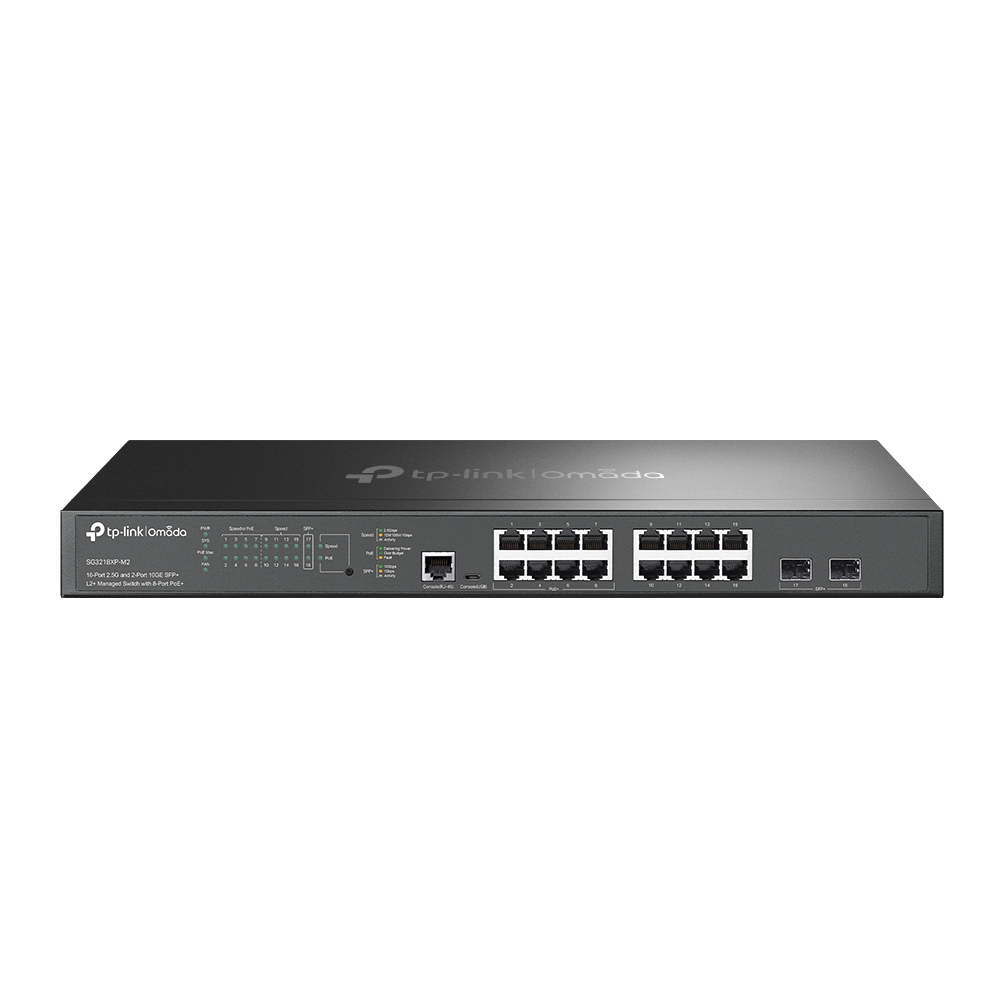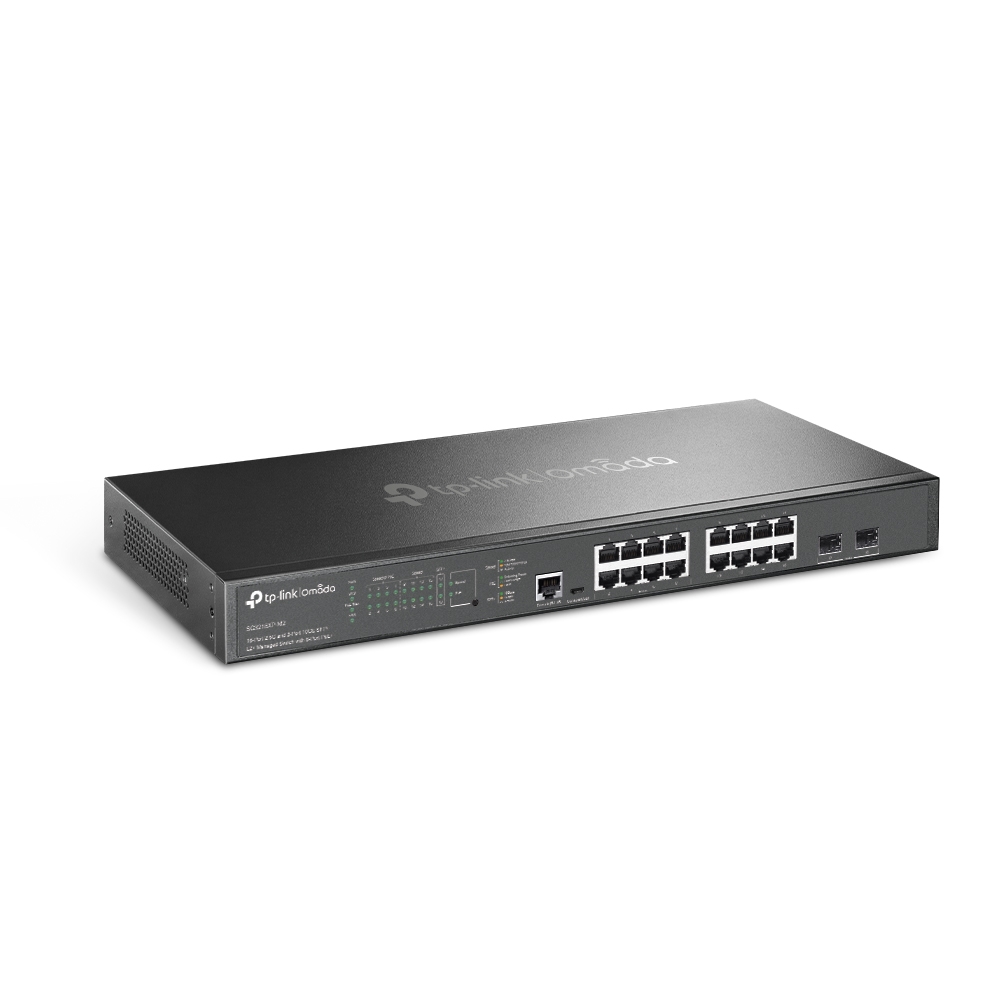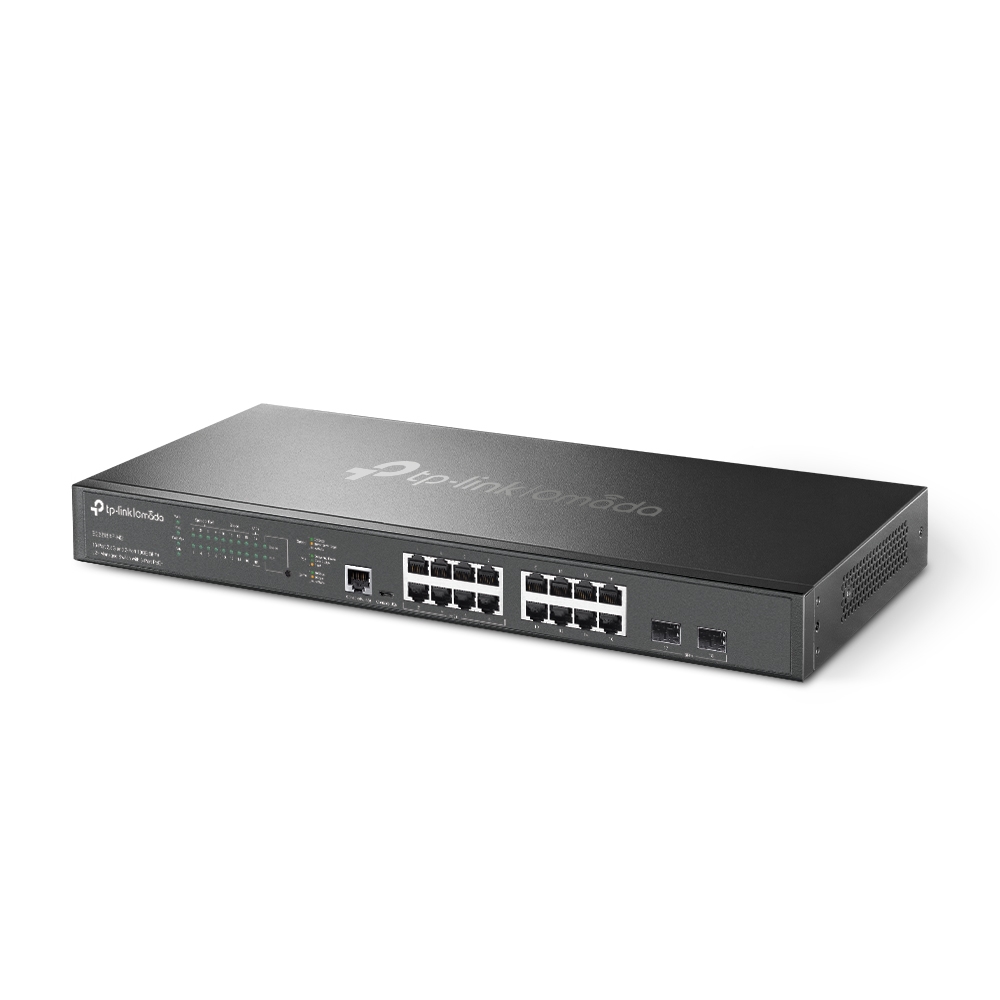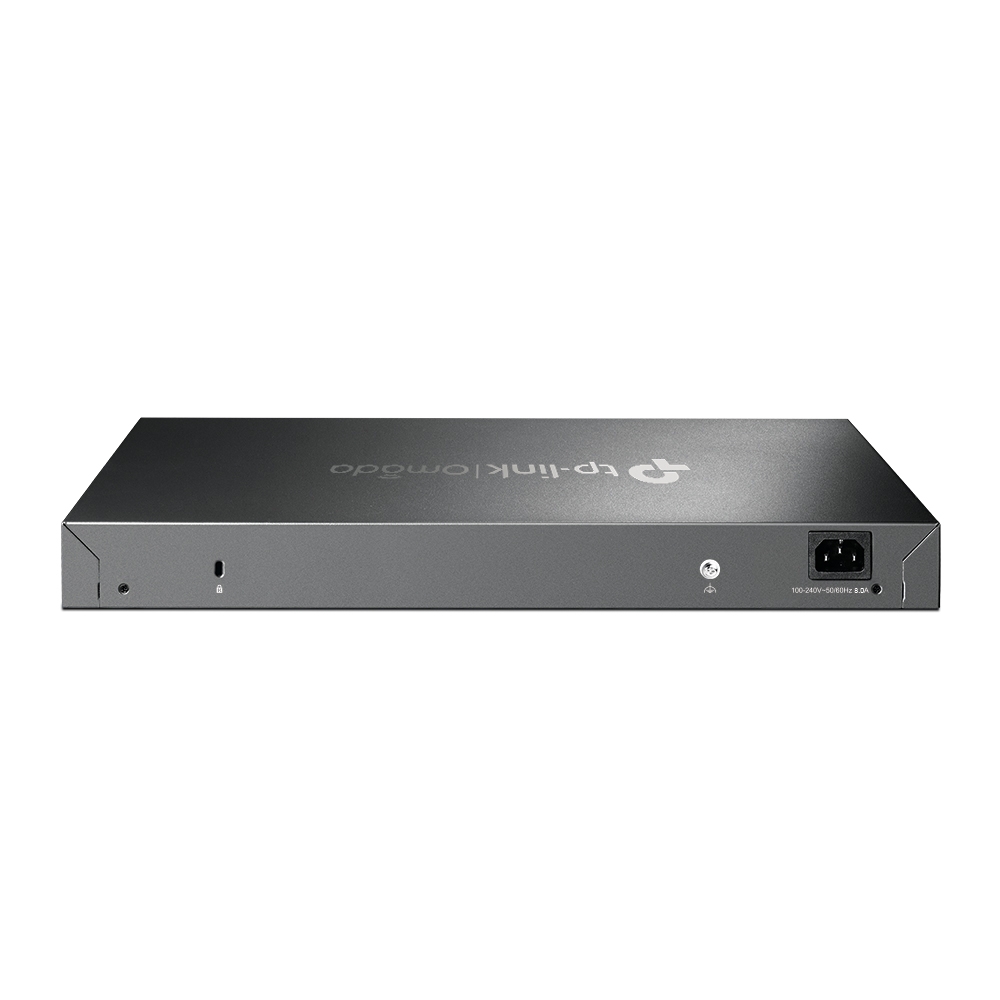TP Link SG3218XP-M2 Omada 16-Port 2.5G & 2-Port SFP+ L2+ Managed Switch with 8-Port Product Ref: TL-SG3218XP-M2
MPN: 88590
2.5G Ports for WiFi 7/6E/6: Eight (8) 2.5 Gbps PoE+ ports and eight (8) 2.5 Gbps Non-PoE ports smash the 2.5G barrier and unlock the full potential of WiFi 7/6E/6 APs.10G Lightning-Fast Uplink: Two (2) 10 Gbps SFP+ slots enable high-bandwidth connectivity and non-blocking switching capacity.240 W PoE Budget: Eight (8) 802.3at/af-compliant PoE+ ports with a total power supply of 240 W.Integrated into Omada SDN: Zero-Touch Provisioning (ZTP), Centralised Cloud Management, and Intelligent Monitoring.Centralised Management: Cloud access and Omada app for ultra convenience and easy management.Static Routing: Helps route internal traffic for more efficient use of network resources.Robust Security Strategies: IP-MAC-Port Binding, ACL, Port Security, DoS Defend, Storm control, DHCP Snooping, 802.1X, Radius Authentication, and more.Optimise Voice and Video Applications: L2/L3/L4 QoS and IGMP snooping.
Technical Specifications Hardware Features Interface
16 x 2.5 Gbps RJ45 Ports 2 x 10G SFP+ Slots 1 x RJ45 Console Port 1 x Micro-USB Console Port Fan Quantity
Power Supply
PoE Ports (RJ45)
Standard: 802.3at/af compliant PoE+ Ports(802.3at PoE): 8 Ports, up to 30 W per port Power Budget: 240 W Dimensions ( W x D x H )
17.3 x 7.1 x 1.7 in. (440 x 180 x 44 mm) Mounting
Max Power Consumption
299.4 W (110V/60Hz)(with 240 W PD connected) Max Heat Dissipation
1021.64 BTU/h (110 V/60 Hz)(with 240 W PD connected) Performance Switching Capacity
Packet Forwarding Rate
MAC Address Table
Packet Buffer Memory
Jumbo Frame
Software Features Quality of Service
8 priority queues 802.1p CoS/DSCP priority Queue schedulingSP (Strict Priority) WRR (Weighted Round Robin) SP+WRR Bandwidth ControlPort/Flow-based Rating Limiting Smoother Performance Action for Flows: QoS remark (802.1P Remark, DSCP Remark) L3 Features
32 IPv4/IPv6 Interfaces Static Routing Static ARP Proxy ARP Gratuitous ARP DHCP Server DHCP RelayDHCP Interface Relay DHCP VLAN Relay DHCP L2 Relay L2 and L2+ Features
Link Aggregationstatic link aggregation 802.3ad LACP Up to 8 aggregation groups, containing 8 ports per group Spanning Tree Protocol802.1d STP 802.1w RSTP 802.1s MSTP STP Security: TC Protect, BPDU Filter, Root Protect Loopback Detection Flow Control802.3x Flow Control HOL Blocking Prevention MirroringPort Mirroring CPU Mirroring One-to-One Many-to-One Tx/Rx/Both L2 Multicast
IGMP SnoopingIGMP v1/v2/v3 Snooping Fast Leave IGMP Snooping Querier IGMP Authentication IGMP Authentication MLD SnoopingMLD v1/v2 Snooping Fast Leave MLD Snooping Querier Static Group Config Limited IP Multicast MVR Multicast Filtering: 256 profiles and 16 entries per profile Advanced Features
Automatic Device Discovery Access Control List
Time-based ACL MAC ACLSource MAC Destination MAC VLAN ID User Priority Ether Type IP ACLSource IP Destination IP Fragment IP Protocol TCP Flag TCP/UDP Port DSCP/IP TOS User Priority Combined ACL Packet Content ACL IPv6 ACL PolicyMirroring Redirect Rate Limit QoS Remark ACL apply to Port/VLAN Security
IP-MAC-Port Binding512 Entries DHCP Snooping ARP Inspection IPv4 Source Guard: 100 Entries IPv6-MAC-Port Binding512 Entries DHCPv6 Snooping ND Detection IPv6 Source Guard: 100 Entries DoS Defend Static/Dynamic Port SecurityUp to 64 MAC addresses per port Broadcast/Multicast/Unicast Storm Control 802.1XPort base authentication Mac base authentication VLAN Assignment MAB Guest VLAN Support Radius authentication and accountability AAA (including TACACS+) Port Isolation Secure web management through HTTPS with SSLv3/TLS 1.2 Secure Command Line Interface (CLI) management with SSHv1/SSHv2 IP/Port/MAC based access control IPv6
IPv6 Dual IPv4/IPv6 Multicast Listener Discovery (MLD) Snooping IPv6 ACL IPv6 Interface Static IPv6 Routing IPv6 neighbour discovery (ND) Path maximum transmission unit (MTU) discovery Internet Control Message Protocol (ICMP) version 6 TCPv6/UDPv6 IPv6 applicationsDHCPv6 Client Ping6 Tracert6 Telnet (v6) IPv6 SNMP IPv6 SSH IPv6 SSL Http/Https IPv6 TFTP MIBs
MIB II (RFC1213) Interface MIB (RFC2233) Ethernet Interface MIB (RFC1643) Bridge MIB (RFC1493) P/Q-Bridge MIB (RFC2674) RMON MIB (RFC2819) RMON2 MIB (RFC2021) Radius Accounting Client MIB (RFC2620) Radius Authentication Client MIB (RFC2618) Remote Ping, Traceroute MIB (RFC2925) Support TP-Link private MIB Management Omada App
Yes. Requiring the use of OC300, OC200, Omada Cloud-Based Controller, or Omada Software Controller. Centralised Management
Omada Cloud-Based Controller Omada Hardware Controller (OC300) Omada Hardware Controller (OC200) Omada Software Controller Cloud Access
Yes. Requiring the use of OC300, OC200, Omada Cloud-Based Controller, or Omada Software Controller. Zero-Touch Provisioning
Yes. Requiring the use of Omada Cloud-Based Controller. Management Features
Web-based GUI Command Line Interface (CLI) through the console port, telnet SNMP v1/v2c/v3Trap/Inform RMON (1,2,3,9 groups)
Added to basket
Basket summary
Delivery
Calculated at checkout
Order Total
£[basketSummaryTotalSubTotalNet]
Dispatched In 2 Working Days. (Order By 12pm)
We currently hold [remaining-stock] units of this item in stock. The remainder will be put on back order.
You cannot order more of this item than we currently hold in stock.
You must order at least [min-order-qty] of this product.
You must order at least [min-order-qty] of this product. We currently hold [remaining-stock] in stock. The remainder will be put on back order.
This site uses cookies. By continuing your visit, you accept their use as set out in our Cookie Policy . OK



